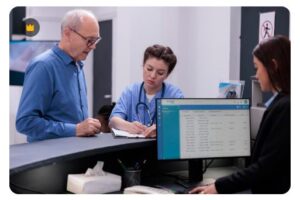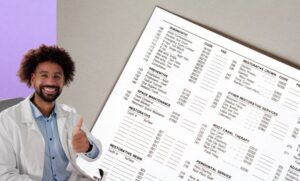In the complex world of healthcare, understanding medical codes is crucial for effective communication between healthcare providers, insurers, and patients. One such important code is CPT Code 97110. In this article, we will delve into the depths of CPT Code 97110, exploring its significance, applications, and how it impacts both healthcare professionals and patients.
What is CPT Code 97110?
CPT Code 97110 falls under the Current Procedural Terminology (CPT) codes, a medical code set maintained by the American Medical Association. Specifically, 97110 refers to a therapeutic procedure, one that focuses on improving functional abilities and mobility in patients. This code is used to denote various forms of physical therapy exercises and techniques.
The Significance of CPT Code 97110
When a healthcare professional uses CPT Code 97110, they are indicating that the patient received therapeutic exercises to improve strength, endurance, range of motion, and flexibility. These exercises are tailored to address specific conditions or injuries, promoting recovery and enhancing the patient’s overall quality of life.
Applications in Rehabilitation
In the realm of rehabilitation, CPT Code 97110 is a fundamental tool. It is often employed after surgeries, accidents, or illnesses that affect a patient’s physical abilities. Physical therapists utilize this code to design customized exercise programs, aiding patients in regaining their strength and mobility.
Understanding the Therapeutic Techniques
Under CPT Code 97110, several therapeutic techniques are encompassed. These include:
Isometric Exercises:
Isometric exercises involve muscle contraction without joint movement. These exercises help in building strength and stability, especially in situations where movement might be restricted due to injury or pain.
Neuromuscular Reeducation:
This technique focuses on retraining the muscles and nerves to work together properly. It is particularly beneficial for patients recovering from neurological disorders or injuries, helping them regain control over their muscles and movements.
Gait Training:
Gait training involves teaching patients the correct way to walk, improving their balance and coordination. This technique is commonly used for patients recovering from surgeries, accidents, or strokes, enhancing their ability to walk confidently and safely.
Ultrasound Therapy:
While ultrasound therapy involves the use of sound waves for therapeutic effects, it can be included under CPT Code 97110 when used in conjunction with therapeutic exercises. Ultrasound therapy helps in reducing inflammation, improving blood circulation, and relieving pain, making it an effective adjunct to exercises.
Soft Tissue Mobilization:
Therapists use hands-on techniques to mobilize soft tissues such as muscles, tendons, and ligaments. Soft tissue mobilization aims to reduce muscle spasms, improve flexibility, and alleviate pain, promoting better movement and function.
Also read:
Myofascial Release:
Myofascial release is a specialized technique focusing on releasing tension in the fascia, the connective tissue surrounding muscles. By applying sustained pressure and gentle stretching, therapists can improve range of motion, reduce pain, and enhance overall muscle function.
Proprioceptive Neuromuscular Facilitation (PNF):
PNF techniques involve both stretching and contracting muscles. This approach helps in improving muscle strength, flexibility, and coordination. Therapists use PNF to enhance functional movements and restore normal muscle function after injuries.
Balance Exercises:
Balance exercises are vital for patients with vestibular disorders or those at risk of falling. Therapists employ various exercises to challenge a patient’s balance, improving stability and preventing falls. These exercises can include standing on one leg, walking on uneven surfaces, or using balance boards.
Stretching Exercises:
Targeted stretches enhance flexibility, ensuring that muscles and joints can move freely, reducing the risk of injuries and improving overall mobility.
Strengthening Exercises:
These exercises focus on building muscle strength, vital for patients recovering from injuries or surgeries. Strengthening muscles aids in regaining stability and balance.
Endurance Training:
Endurance exercises enhance cardiovascular health and stamina. Patients recovering from cardiac events or prolonged illnesses benefit significantly from these exercises, gradually increasing their endurance levels.
Joint Mobilization:
Physical therapists employ specific techniques to improve joint mobility, reducing pain and enhancing the range of motion. This is especially beneficial for patients with arthritis or joint-related issues.
Balance and Coordination Training:
For individuals recovering from injuries affecting balance, therapeutic exercises targeting coordination and balance are essential. These exercises reduce the risk of falls and improve overall stability.
Insurance and CPT Code 97110
Understanding CPT codes is not only essential for healthcare professionals but also for patients dealing with insurance matters. CPT Code 97110, when used by a healthcare provider, plays a pivotal role in insurance claims. It ensures that the provided services are accurately documented, allowing for proper reimbursement from insurance companies. Patients can rest assured that the therapy they receive is not only beneficial but also properly coded for insurance purposes.
Patient Experience and Expectations
For patients, the experience under CPT Code 97110 is transformative. It signifies a journey toward recovery, with healthcare professionals guiding them every step of the way. Patients can expect personalized exercises, attentive therapists, and a gradual improvement in their physical abilities. This code represents hope and progress, motivating individuals to actively participate in their rehabilitation process.
Conclusion
In the realm of healthcare, CPT Code 97110 stands as a beacon of progress and recovery. It signifies the dedication of healthcare professionals to enhance the lives of their patients. Understanding the nuances of this code not only benefits healthcare providers but also empowers patients, ensuring they receive the best possible care on their path to recovery. As we navigate the intricate world of medical procedures and codes, CPT Code 97110 stands tall, reminding us of the healing power of therapeutic exercises and the resilience of the human body.









